Bone flutes, pelvis banjo and a horse semen shaker: how Matthew Herbert made an entire album using a horse skeleton
“I’m sure my internet search history raised a few red flags when researching this, but when sped up by four or five times it became my favourite melodic squeak on the record“
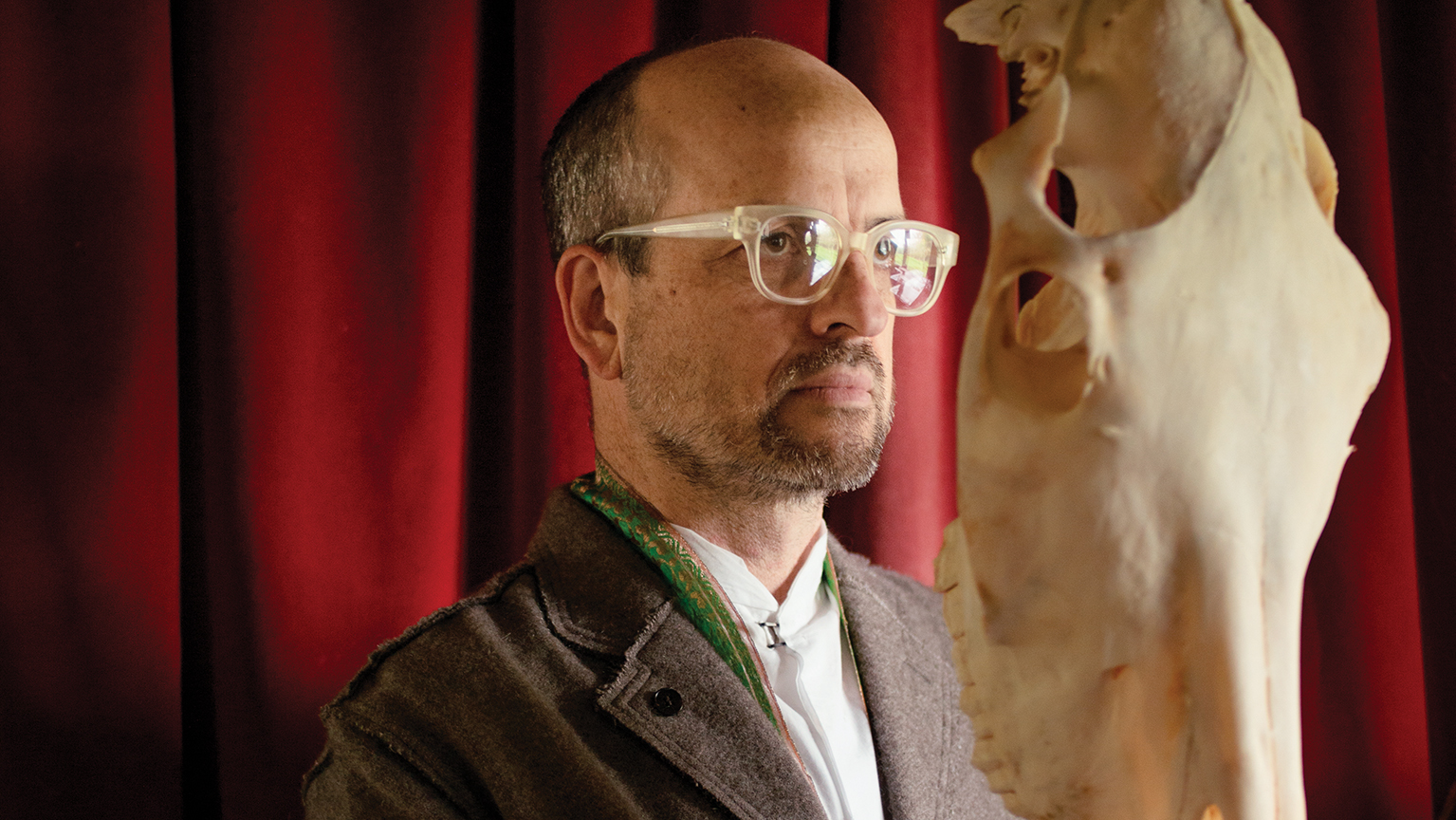
Long considered one of the most inventive producers of his generation, Matthew Herbert’s restless fascination with sampling has created some starkly original releases in recent years. Since starting to score for film in the late ’90s, the composer has spent much time creating ingenious rhythms from various body parts, raising complex questions regarding consumerism and our relationship with the animal kingdom.
With his latest album, The Horse, Herbert takes another remarkable leap. Expanding an idea that surfaced while writing a horror film score, he decided to purchase a full-size horse skeleton and use various parts as source material for sonic reanimation. Working with instrument-makers, the London Contemporary Orchestra and numerous world-leading soloists, The Horse is perhaps Herbert’s most inexplicable yet compelling experiment to date.
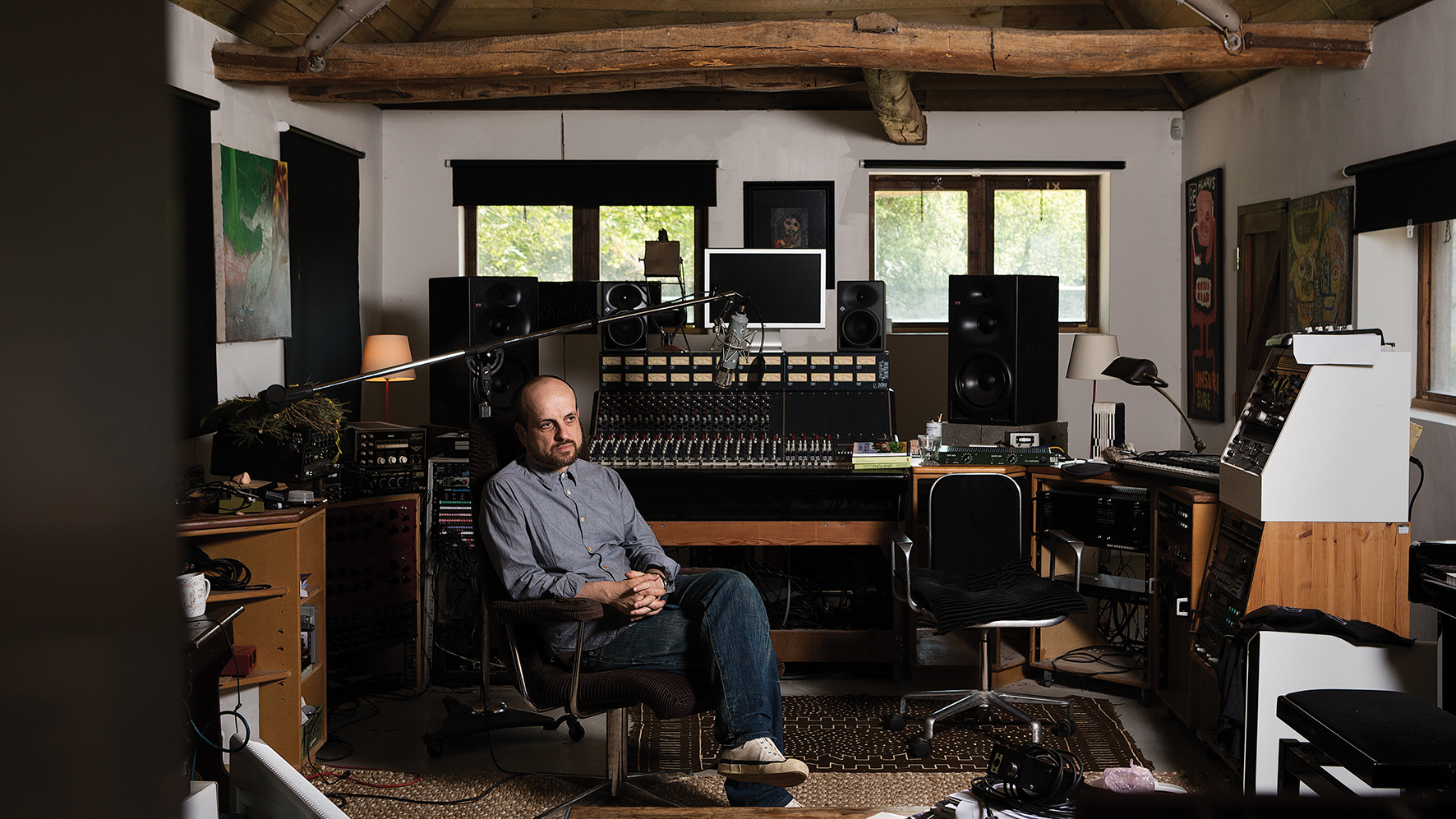
Do you tend to work on projects simultaneously, or does each one require your total attention?
“It’s a combination of wanting to and having to, but I quite like working on projects simultaneously. Part of that is due to the horrific economics of making a living in the music industry as an independent artist and the need to subsidise work by doing other work. Film and TV schedules always go over or move forward, but the third aspect is that I really like how projects inform each other.
When I started The Horse it took me a while to realise that it’s about trying to bring a horse back to life through music
“When I started The Horse it took me a while to realise that it’s about trying to bring a horse back to life through music. Basically, I was talking to a dramaturg called Kirsty Housley and movement director Imogen Knight about how to construct a narrative and imagery around the skeleton of an unknown horse, when I got a call from a production company about working on an English horror film about a couple who move back to the countryside when tragedy strikes after a male figure digs up a skeleton of a hare that starts growing muscles and comes back to life. I’d bought some hare bones from Ukraine to make the score and suddenly looked around my studio and found that it was full of skeletons that I was trying to reanimate [laughs].”
Did you see this as the celebration of the horse in particular, or could it have been any animal?
“It could have been any animal because when it started I was looking for a diplodocus or a bison on eBay – whatever was the biggest skeleton I could find. The horse ended up being the largest, but I still bought it without really knowing why. I knew I wanted to make a record out of a skeleton, but hadn’t begun to think about everything else that the album would become.
Want all the hottest music and gear news, reviews, deals, features and more, direct to your inbox? Sign up here.
“The more I noticed or thought about horses, they seemed to appear absolutely everywhere. After some research I realised that we wouldn’t have had the industrial revolution without them because we relied on horses to dig coal from the ground, haul it to the surface, carry people around and transform our economy. Horse racing is also the second biggest sport after football and subsidised by the government to the tune of £100m per year, so from sport and leisure to industry, the horse is woven through our culture.
“Ironically, when I was making the record a metal detectorist was interested in finding out what was on our land and dug up a little bronze age offering to the horse gods that’s somewhere between 2,000 and 10,000 years old. That’s the image on the cover of the album.”
The way the album unfolds sounds like a process of reanimation, from the sourcing of the bones to recreating the motion of a racehorse…
“Even 200 years ago, if we wanted to make a piece of music out of a horse we’d have had to imitate the sound of what a horse might make while running or the emotion it might arouse in us, whereas now we can take field recordings or sounds from the internet and use the real sound of a horse. So there is a reincarnation aspect that follows the musical story.
By following my nose and the history of music, I inevitably ended up with this virtual or digital reincarnation of the horse
“It starts with bone flutes that I had made out of the skeleton and the next sound you hear is the skin of a horse stretched over wood to make a horse skin drum. Then you hear a lyre, which is made out of a pelvis before the sound moves into electronics, sound manipulation and sampling. By following my nose and the history of music, I inevitably ended up with this virtual or digital reincarnation of the horse.
“As mentioned, at first I didn’t really know I was doing that and all the musicians I worked with didn’t know either – they’d never played bone flutes or a horse pelvis live before. I gave the orchestral musicians ribs and some horse hair to make their own bows to play their instruments with, so, collectively, we were all feeling our way and trying to look for something. It was a bit like going on an archaeological dig or panning for gold.”
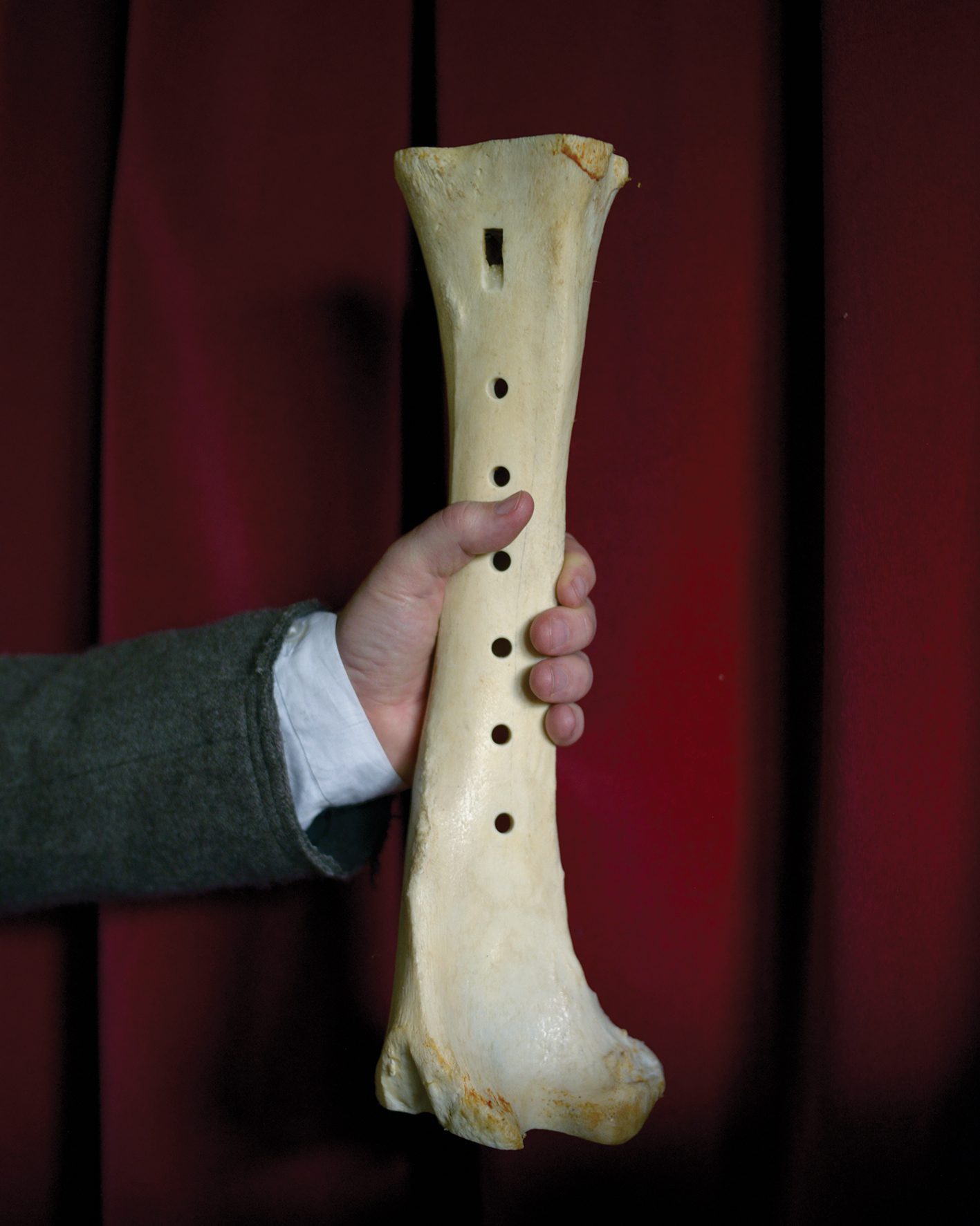
How did you go about sourcing the physical skeleton and turning that into instruments?
“The skeleton process was relatively painless. I found somebody on eBay who was emigrating and had a large horse skeleton, so he boxed it up and I took a whole collection of bones to the relatively well-known musical instrument maker Henry Dagg in Faversham. He’d made something called the ‘sharpsichord’, which is a very big pin-barrel organ that Bjork ended up using on her Biophilia tour.
“Whereas humans have a calf and thigh bone, horses have three articulations in the leg, so he took four of those bigger bones, chopped the ends off and made flutes out of them, stuffing bees wax into the end to create the opening. He did struggle with that, but ended up making what’s called a fipple flute, which is a bit more like a recorder.
“A couple of weeks later I took the pelvis to him and he strung a little banjo to the bottom to create a resonating chamber, put sheep gut strings onto some pegs for tuning and set some contact mics in there. Just stroking the weird texture of the pelvis gives you some extraordinary textures before you’ve even plucked the thing.”
In the past you’ve used the human body to create samples from, so did you ever consider sampling a live horse?
“I made a record out of a pig that followed it from birth through to it being killed and eaten, which indicates that I’m more interested in creating an afterlife relationship with the natural world around us.
It’s a fascinating thing to say to a musician that they’re the first person to have ever created a melody on a certain type of musical instrument
“It’s a complex and fascinating idea and for this project I went to caves in Northern Spain to see some of the oldest horse drawings in the world, made a few surreptitious recordings and worked with Rupert Till from the University of Huddersfield who had permission to provide me with impulse responses. So there I was with the bones in my studio, along with these impulse responses that allowed me to recreate chamber sounds from these Palaeolithic caves.
“In a way, you’re reaching right back through history and embarking on a journey of culture, art and music. That process was such a big leap, that to have a real horse would have been a distraction or diluted the reach across that divide somehow. It’s also a fascinating thing to say to a musician that they’re the first person to have ever created a melody on a certain type of musical instrument.”
There’s also the fun aspect of creating instruments and inventing sounds.
“That’s really important because we live in a political landscape that’s not interested in curiosity or imagination – it’s just interested in economics. They’re talking about defunding the arts and making it harder for people to study music at university, and there’s been a collapse in the presence of music teaching at schools.
“After years of decimation and creating a miserly, miserable vision of what this country should be, there’s a provocation around having fun, exploring and using one’s imagination to try and imagine the future or the world differently. That activity can be socially engaging and really joyful and I had so much fun making this record.
We live in a political landscape that’s not interested in curiosity or imagination – it’s just interested in economics. There’s a provocation around having fun, exploring and using one’s imagination
“I went to work with Sam Underwood and Graham Dunning who built the mammoth beetle, which is a giant mechanical drum machine powered by an electrical motor. You can programme it by adding different cogs, but it’s all properly analogue. There’s no electrical circuitry and you can set up different betas and patterns. I discovered that the vertebrae all make different sounds because they have different lengths and pitches and you can hear that on the record.
“Later on, I bought a cement mixer to demonstrate the exploitation or mechanisation of the animal kingdom and had a lot of fun putting different things in there, like whips, horse stamps and horseshoes to see what they sounded like. You can never underestimate how much you can learn from messing about.”
Did you have a clear idea regarding who you wanted to play some of the instruments that you’d created?
“The short answer is that there was a whole range of different approaches. I knew that I wanted Shabaka Hutchings because he’d been playing saxophone less and working with different flutes like the ‘shakuhachi’. He’s an extraordinary musician, so I was privileged and grateful to work with him.
“I also love Seb Rochford’s creativity with percussion. We went into the studio, turned the lights off and I turned up with a huge pile of bones and said, of course we can hit them, but what else can we do that’s interesting? He started scraping them with different materials, which was a real exploration. With both of those musicians, I saved the best bits, chopped them up and reworked those experiments.”
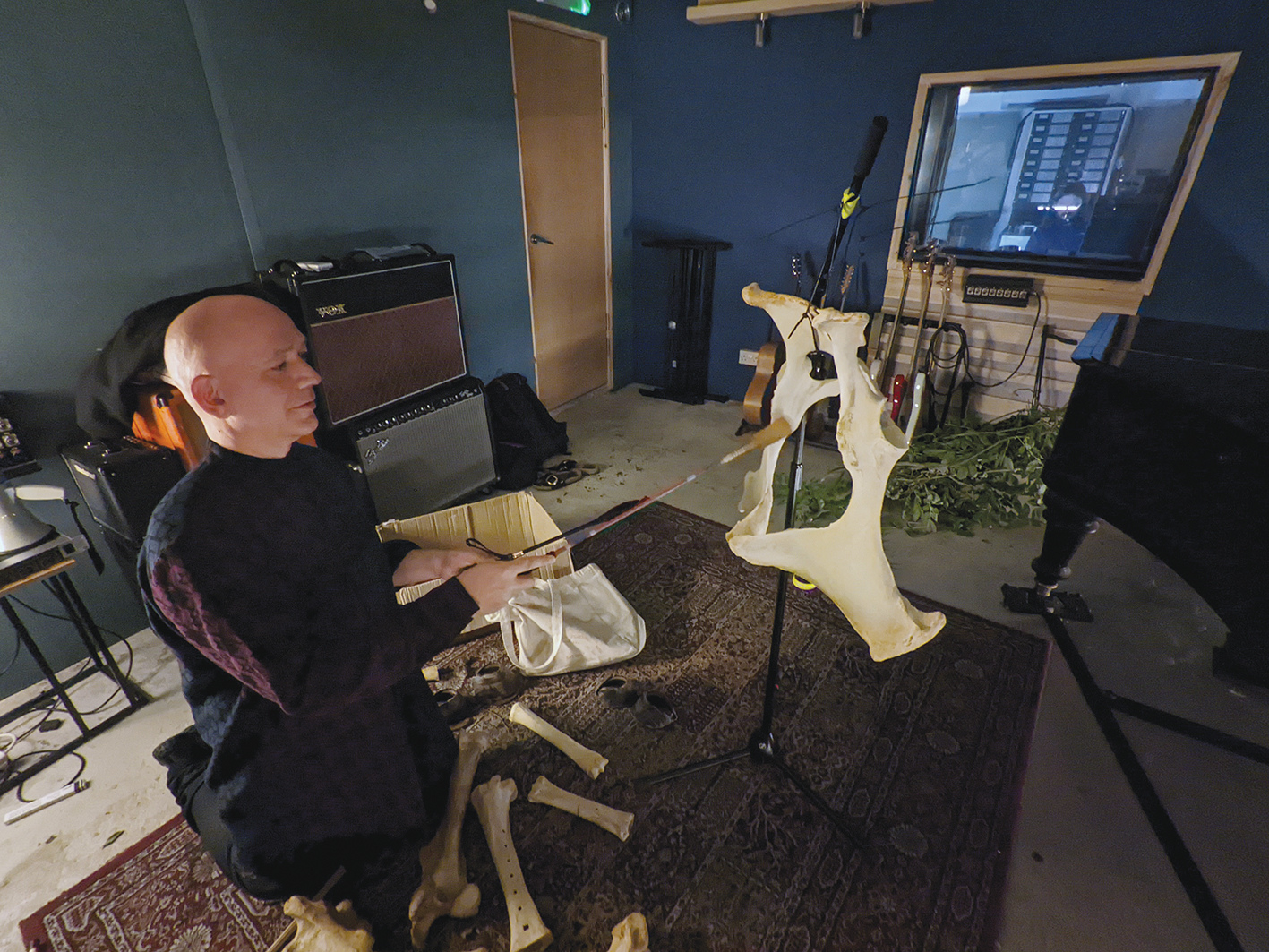
Who else did you work with?
“I worked with tuba player Theon Cross. I’d written a basic melody as a starting point, recorded the orchestral part and asked him to go for it, at which point he created one of the most extraordinary recordings. There was something spiritual about the whole idea of bringing this horse back to life and Theon represented that with a real raucousness on The Horse Has A Voice.
“I’d also worked on a film in Panama with pianist Danilo Pérez who is a real hero of mine. Again, I sent him bare bones and asked him to find his own way with the idea that a horse is finally back to life, settled in a field and going about its day eating, drinking and having a run around. It’s just an example of the process trying to mirror the narrative content.”
In this case, how important was it for you to try to convey your ideas to the listener as accurately as possible, as opposed to leaving them open to interpretation?
“An important point for me is to try and forget or reimagine the idea of a listener. People in Mongolia might be familiar with the sound of horses and horse bones, but that’s less likely to apply to someone who grew up in a tower block in Birmingham. Thinking about your audience in that way can be a red herring and get you into problems, but I will use certain techniques depending on how much I want to let the audience in.
The straightest track is probably The Rider (Not the Horse), which is a house track. All the percussion is made from rib bones played from other tiny rib bones
“For example, it was really important that The Horse didn’t get lost on the internet. Once an album’s out, people take the tracks and do what they want with them on TikTok or use them for a film score or DJ set, so it was important to me for every track on the album to feature the word ‘horse’ and try to describe the journey of the music through the titling. When you’re working with sounds you can make them quite explicit or mutate them, but you have to be careful not to disguise them too much otherwise there’s no point using them texturally.
“The straightest track is probably The Rider (Not the Horse), which is a house track. All the percussion is made from rib bones played from other tiny rib bones, but because of the way the production is done you don’t think of it in that way. For example, there are no electronic kick drums on this album; they’re all made from horse bits, so that communication with the listener is always a negotiation.”
You also worked with the London Contemporary Orchestra. Presumably, you’d already come across them from writing various film scores?
“I’ve a long history with them having done quite a few film and TV scores over the years with the conductor and arranger Hugh Brunt. Film recording musicians are incredibly skilled but used to playing exactly what’s written down, so trying to come up with a new structure or system that allowed them to express themselves and hopefully discover something new was a really interesting process.
“For the first orchestral session, I booked them for two hours, came with nothing and said you’re now going to try and pretend you’ve never played your instruments before. I gave them the horse hair and ribs and they started to experiment by playing the highest and lowest notes and trying to make single chords, harmonies and textures.
“In a way, it was like recording a sample library, so I went away and turned all of that into sampled instruments. On the second session, I gave them dots and charts to play along to from weird parts that I’d already slowed down and sped up.”
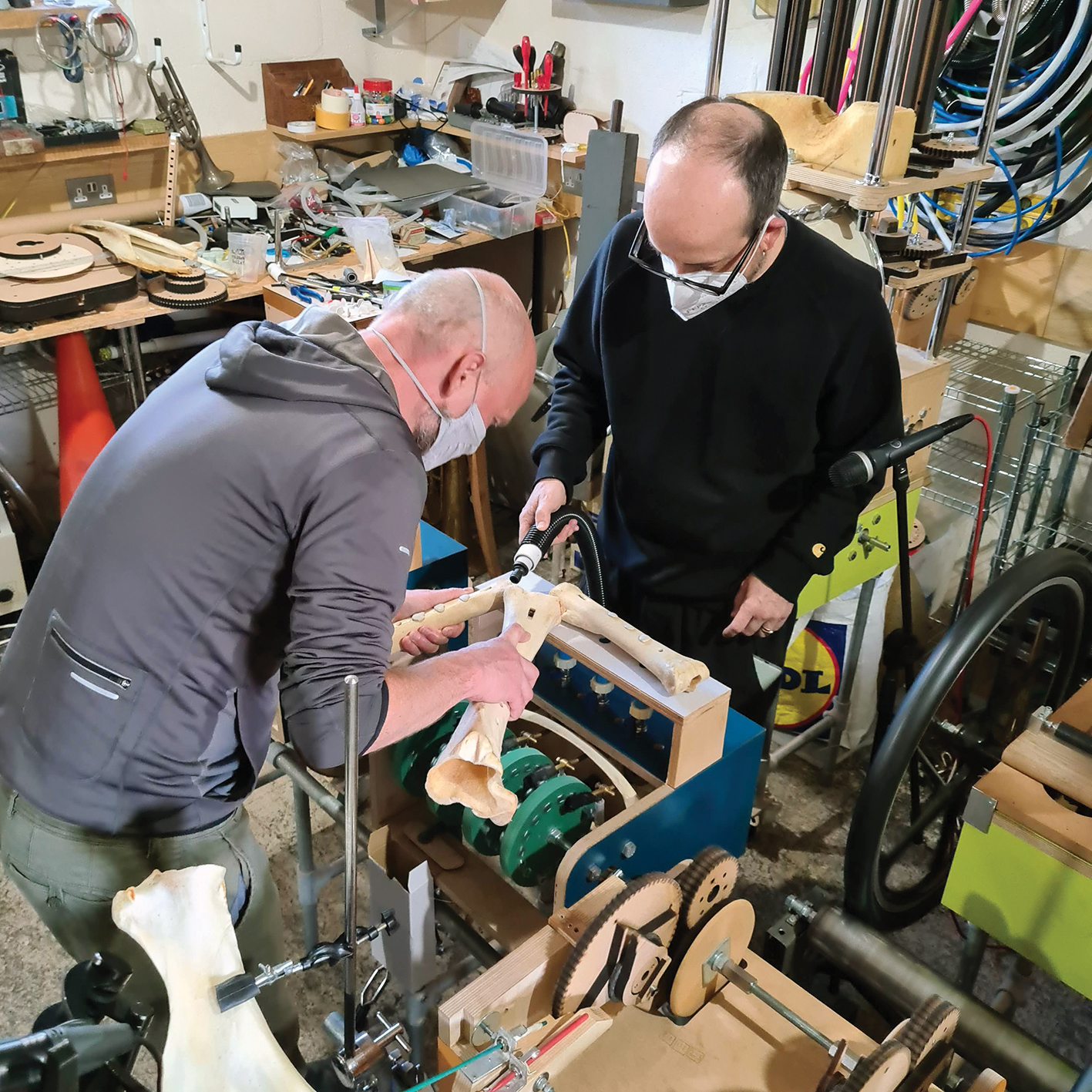
It’s hard to figure out these days, but was the orchestra mostly used for tracks like The Rider (Not the Horse) and The Truck That Follows The Horses?
“There’s no fake orchestra on anything. The Rider is all orchestral in a fairly conventional way but The Truck That Follows The Horses is a combination of me sampling them, bending, speeding and slowing them down and having them play on top of themselves. The whole thing is more like a network than a hierarchy – we all bounced off each other.”
You also mined thousands of samples from YouTube. How do you achieve that in a way that’s productive?
“A lot of that stuff is automated based on machine learning. I worked with Matthew Yee-King from Goldsmith’s University and programmer and sound artist Dan Jones. They’re very good at constructing new ways of listening to the internet. I’d ask them to find me something and the computer would scrape the internet and bring stuff back.”
Can you describe that process in more depth?
“I once did a piece where I needed to fetch 25,000 dog barks from the internet. You obviously need to sort them out and set thresholds, but it’s an interesting area for research and innovation and I wanted to get up to date on that.
It breaks my heart that I’ve got a Neve 5088 desk and this album didn’t go through it
“I also worked on a film score called Life In A Day with Kevin Macdonald and Ridley Scott that was made out of 335,000 films uploaded to YouTube on a particular day, so we used the technology to find every sound that was a B natural, which could be a chicken noise, a car horn or someone playing a guitar, and asked it to come back playing the shortest, longest, quietest or loudest sounds. I ended up with a million different audio files, so you need powerful computing and a good naming structure.
“For The Horse, I ended up with 7,000 individual audio files, but I wanted them all on one Logic session, so I ended up with 2,000 audio tracks at 96k. The computer really struggled with that and I ended up with 300-400 busses. For the next record, I’m trying to listen to a billion audio objects in just over an hour. Trying to reimagine the workflow is a fun part of that as you can’t possibly get all those files into Logic.”
Would you have been able to complete a project like The Horse without your history of film scoring?
“The score work has been really helpful on the orchestral side of things. I didn’t do music at university and my formal classical music training stopped at Grade A piano and violin aged 17. Doing film and TV scores gave me an opportunity to learn the craft and discover how musicians work and what they’re willing to do to get the best out of them rather than treating them like plugins until you get something you like.
“It’s also taught me discipline. I’m still an independent artist and sometimes have to record 25-30 orchestral pieces in one session and go very quickly – that’s not much time when you’re still trying to find your way.”
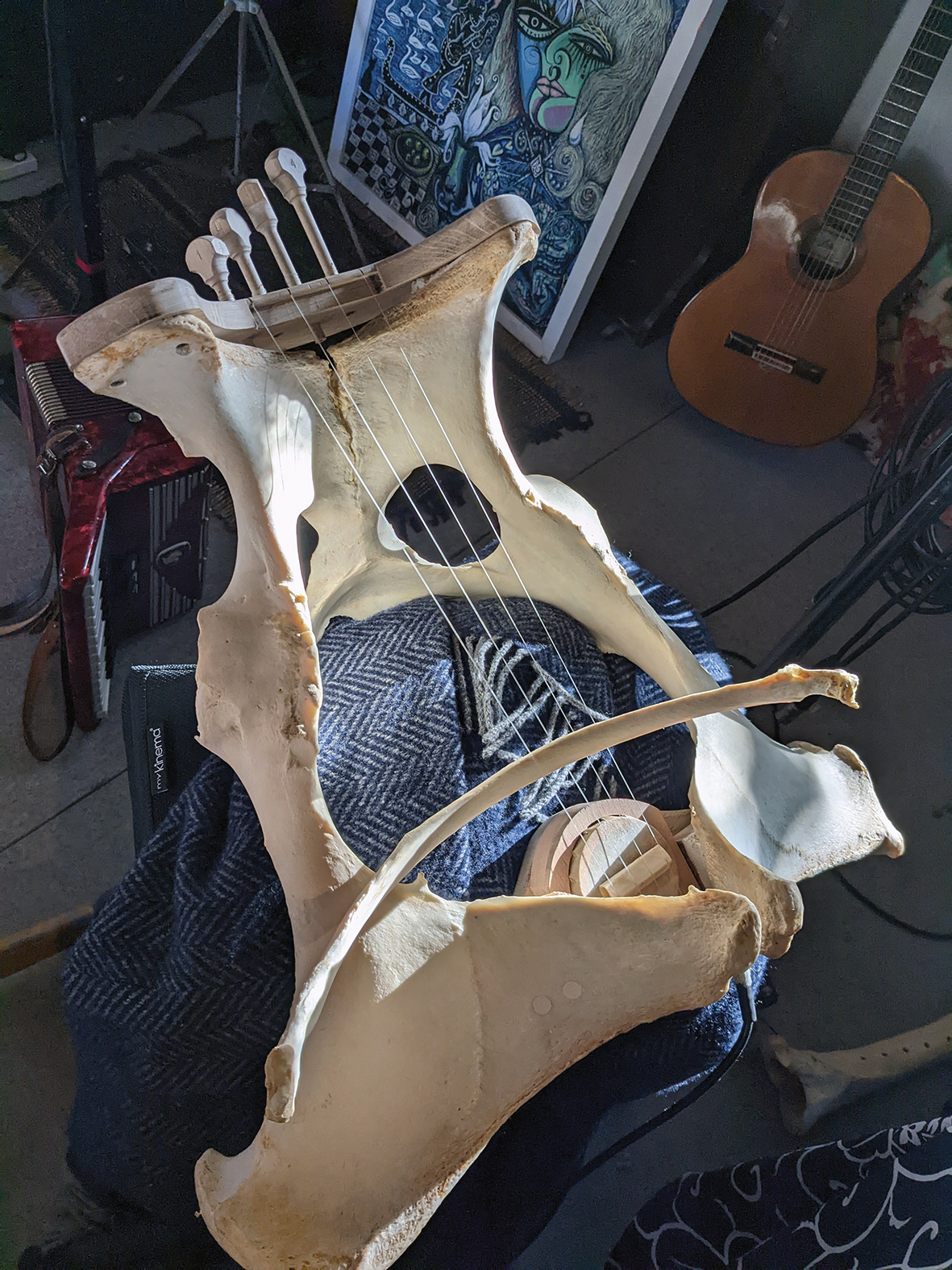
As a notorious sampler of sound, is your studio fairly basic now in terms of the equipment you’re using?
“This is my first ever in-the-box album – it just became too bulky to route all of those tracks and busses through analogue gear, and all the TV and film work has to be in the box because if a producer likes something you did three weeks ago you have to go back and retrieve it exactly as it was. It’s difficult, because I’m the son of a BBC sound engineer and don’t like the sound of in-the-box stuff.
“When we mastered The Horse, I insisted on having an analogue stage just to get out of the computer and back in, but it breaks my heart that I’ve got a Neve 5088 desk and this album didn’t go through it. Things are getting better in terms of plugins getting closer to an analogue sound, but it just doesn’t have the three-dimensional character that I’m familiar with and love.”
Do any plugins get you closer to that three-dimensional sound you’re looking for?
“I like the Bricasti emulation called LiquidSonics’ Seventh Heaven. The Bricasti is an incredible reverb box and the plugin doesn’t sound quite as good as the hardware, but it’s pretty close. I feel really bad sitting right next to the Bricasti box only to pull up a plugin, but then you have the opportunity to use 150 instances of instead of one and recording and bouncing it in.
“Although I don’t like their new pricing model, I like the Waves J37 saturation plugin and think that all the Abbey Road Waves vinyl and tape emulator plugins give a real depth and girth – if we can stop the sniggering at the back. It’s nice to be able to add some weight back, particularly when working with found sounds, but then some of the Plugin Alliance stuff has a clarity and cleanliness that’s really good for precision.”
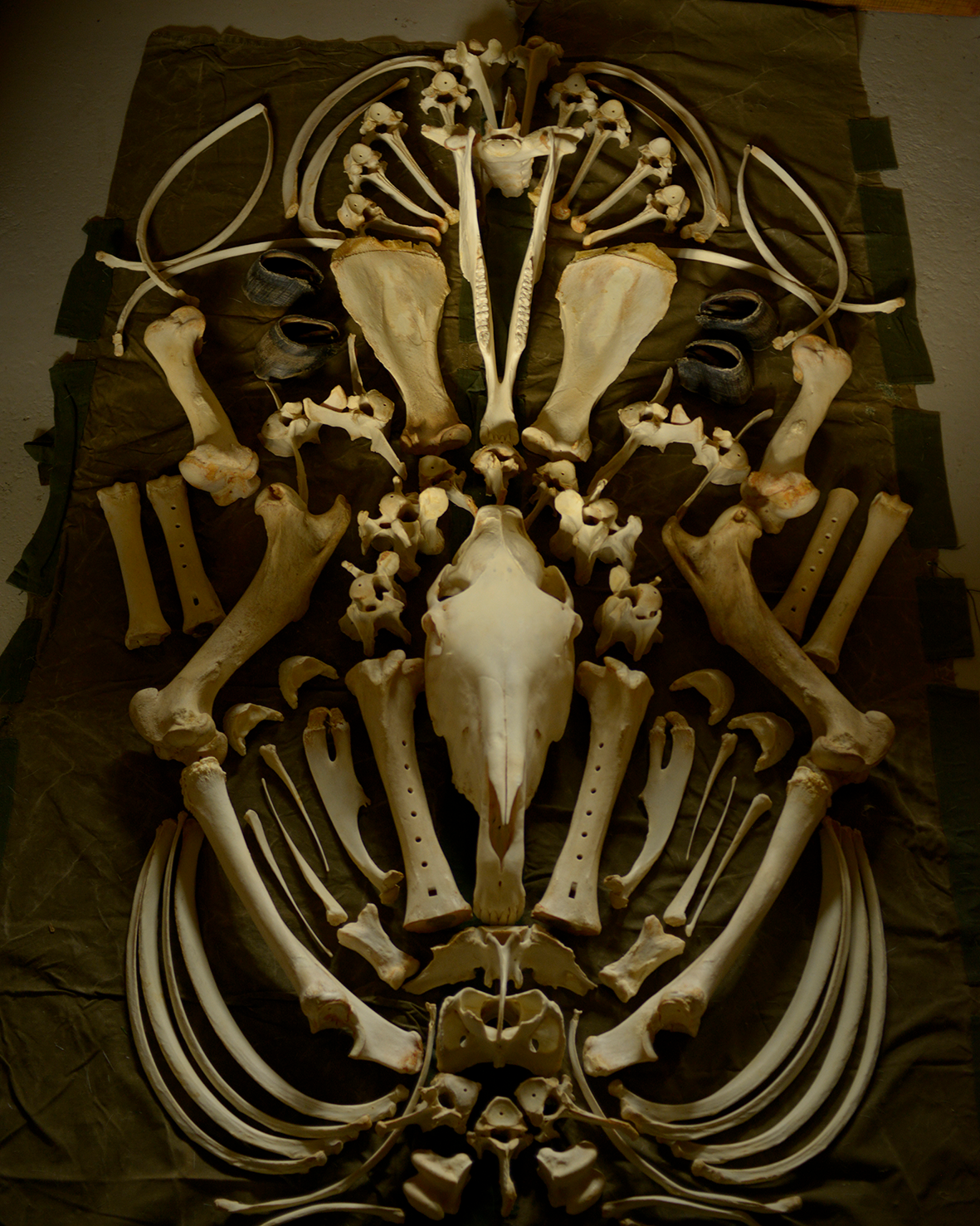
Is there a distinction between the sound of a sampled object and the emotion of a live musician once that sound is committed to a digital recording?
“There is, albeit not always for the better. A sample feels like it becomes an object that’s contained instead of being free and there’s something disappointing about that because, despite what the music industry will tell you, music is a process not a product. Any musician will tell you that once they finish an album and tour it, the music changes and they finally understand what the record is. The meaning, context and the players that play on it and where they are in their lives is always in flux and the minute you contain it, it becomes much more like Lego.
Music is a process not a product. The meaning, context and the players that play on it and where they are in their lives is always in flux
“There’s also a tension between an acoustic and recorded sound. One of the things I’ve loved about making this record is a return to materials. Blowing air through a bit of a horse to make a melody has been utterly thrilling, weird, challenging and beautiful. For me, a key part of the record is that the horse is emblematic or symbolic of our wider relationship to our so-called natural world.”
Do you mean in terms of how humans are thought to be destroying the planet?
“We’re in an existential crisis where the only thing that we have to do to destroy ourselves is to do nothing, and for me to reconnect with materials from the natural world is part of the thrust of the record.
“We wouldn’t have music without animals, whether that’s drum skins or violin and guitar strings, which for many years have been made from the guts of animals. The bows for string instruments are made from horse hair and, obviously, violins and cellos are made from trees that have been chopped down. We’re literally using the things around us to make music with and need to find a healthier and less violent relationship with them within music and all of our lives.”
Matthew Herbert's The Horse is out now on Modern Recordings/BMG.
Matthew Herbert's gear list for The Horse
Horse semen shaker
“This was hand built by Hugh Jones (he wore gloves) by mixing modelling clay with semen from a polo horse called Irentina Supremo and baking it in the oven to create small hard balls that can be agitated to make noise.“
Horse pelvis harp
“Built by esteemed instrument-maker Henry Dagg, he strung sheep gut strings over the horse's pelvis to create a kind of lyre - the very first type of string instrument that humans made.“
Bone flutes
“Also made by Henry Dagg, these are made from some pretty hefty leg bones from the horse, drilled out with a beeswax mouthpiece added to create a kind of fipple flute, similar to a recorder.“
Horse skin drum
“Made by Driftwood Hollow Drums in Powys, this is a 22-inch handheld horse skin shamanic drum, struck with a felt beater. It has the most amazing resonance and it’s hard not to feel like you're summoning something when playing it.“
Mammoth beat organ
“Vast, modular, all-acoustic mechanical drum machine and instrument built by Sam Underwood and Graham Dunning who built a bone tombola attachment to churn the smaller bones and horse trophies. We also attached skeleton parts near the mechanical beaters to generate rhythms.“
Hydrophone and pipette
“A Lee Anderson invention and technique - he blew air through submerged patella, tail base bone and neck vertebrae using tiny pipettes and hydrophones to reveal extraordinary new sonic landscapes.“
Double bullroarer
“Made by Nathan Sweet in America, this is a thing you whirl around like a bull roarer but it's actually a double one that allows you to tune the two halves to make different and complex tones.“
Chandler REDD microphone
“It has so much body and presence for a modern mic. I used it to record many of the details on the record and it’s pretty much my only mic now.“
Logic Pro Sampler
“I'm a Logic beta tester and managed to convince them to add new features that I could use. The extreme time stretching is the most useful part - messing with the fabric of time.“
Horse having sex
“I’m sure my internet search history raised a few red flags when researching this, but when sped up by four or five times this became my favourite melodic squeak on the record.“

